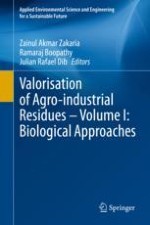2020 | OriginalPaper | Buchkapitel
2. Spent Mushroom Substrate as Biofertilizer for Agriculture Application
verfasst von : Nor Zalina Othman, Mohd Nadzreen Hidayat Sarjuni, Mohamad Azzuan Rosli, Muhammad Helmi Nadri, Leong Hong Yeng, Ong Pei Ying, Mohamad Roji Sarmidi
Erschienen in: Valorisation of Agro-industrial Residues – Volume I: Biological Approaches
Aktivieren Sie unsere intelligente Suche, um passende Fachinhalte oder Patente zu finden.
Wählen Sie Textabschnitte aus um mit Künstlicher Intelligenz passenden Patente zu finden. powered by
Markieren Sie Textabschnitte, um KI-gestützt weitere passende Inhalte zu finden. powered by
